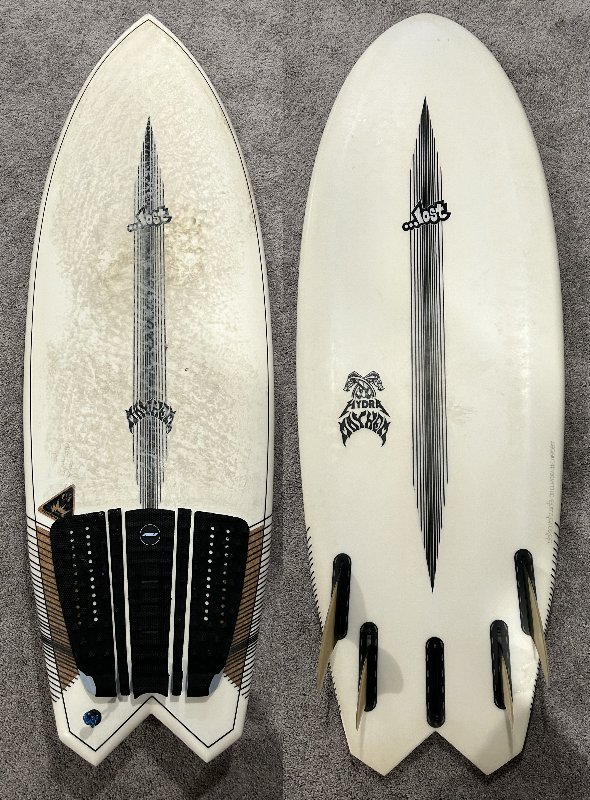Lost Hydra Surfboard Review

I purchased my Lost Hydra in February of 2024. I was lucky enough to find an EPS/Epoxy version on the sale rack and decided I had to try it. The board is 5’5” x 20 1/2” x 2.4” – 30L. I’ve had quite a few small-wave boards, ranging from high-performance grovelers to Mini Simmons-style designs. Of the grovelers I’ve owned, this is by far my favorite. Its low-end performance isn’t quite on par with the Vernor Mini Simmons, but the overall performance is significantly better. This board works well in any waves where you can generate your own speed. When the waves have a bit more shape, it allows you to hit an end section or even get a small air.
The board comes with a five-fin setup, which allows you to use split keels with the quad rear boxes set close to the fronts. It can also be configured as a twin+trailer using the middle box, or as a thruster. Personally, I didn’t like it as a thruster, thought it was OK as a twin with trailer, but I love it with split keels. I’ve ridden it as a quad with the Futures Controller split keels (the bamboo ones), as well as the NVS Album Fascination Quads. I prefer the NVS quads in this board because the tail feels too loose with the Futures Controller split keels. I found that slightly more raked rear fins give it better control, drive, and directionality. With upright quad rears, I noticed the tail was likely to slip when first taking off on a wave-especially when trying to take a high line or if the wave was steep.
The rocker on this board is relatively flat from nose to tail. It struggles a bit when the waves get steeper, but by angling the takeoff, you get a burst of speed and the nose doesn’t catch. With the quad setup, the board has plenty of hold for steep beach break waves. Managing the amount of speed it generates on bigger days can be challenging, but I’ve never had it slip out. What I like most is that the board maintains its speed effectively, allowing you to focus on maneuvers rather than keeping up with the wave. Like most small and wide boards, it duck dives poorly and paddles fairly slowly. That said, it catches waves very easily and is relatively user-friendly to surf.
The board has a fair amount of glide and feels fairly fishy in that regard. I’ve never surfed the original Puddle Jumper, but this board should be a strong competitor. It’s the board I use most here in New Jersey and one of the few I would never get rid of.
Many boards in their advertising claim to work from knee-high to head-high. This board, I can confidently say, works from thigh-high with some shape to chest or shoulder-high and relatively steep. While it’s not the board for barreling swell, it performs well in most of what we see day to day on the East Coast.